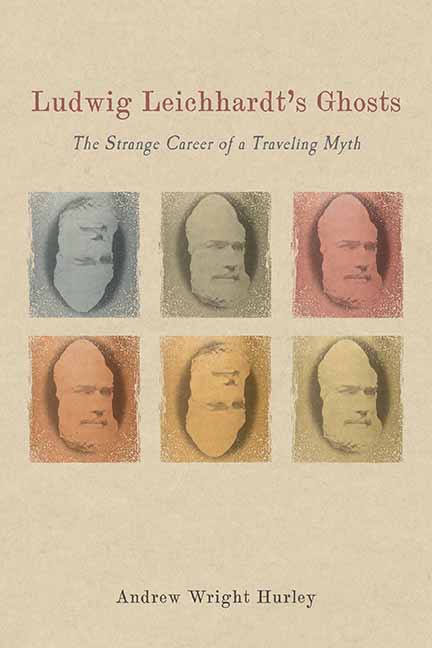Book contents
- Frontmatter
- Dedication
- Contents
- List of Illustrations
- Acknowledgments
- Introduction
- Part I Colonial Entanglements
- 1 Discovering, Mourning, and Honoring Leichhardt between Australia and German-Speaking Europe, 1848–1858
- 2 Ferdinand Mueller, the Ladies Committee, and German-Australian Seekers of Leichhardt
- 3 Taking Leichhardt Home to Germany with Georg Neumayer
- 4 Uneasily Approaching the Centenary
- Part II Colonial Memories
- 5 An Interwar Interregnum, or Finding Leichhardt as a “Friend of the Aborigine”?
- 6 Nazi Leichhardt
- 7 Leichhardt the Cold Warrior
- 8 Leichhardt Explodes, with No End in Sight (including a concluding passage “The Ghost of a Chance”)
- Notes
- Works Cited
- Index
1 - Discovering, Mourning, and Honoring Leichhardt between Australia and German-Speaking Europe, 1848–1858
Published online by Cambridge University Press: 20 August 2020
- Frontmatter
- Dedication
- Contents
- List of Illustrations
- Acknowledgments
- Introduction
- Part I Colonial Entanglements
- 1 Discovering, Mourning, and Honoring Leichhardt between Australia and German-Speaking Europe, 1848–1858
- 2 Ferdinand Mueller, the Ladies Committee, and German-Australian Seekers of Leichhardt
- 3 Taking Leichhardt Home to Germany with Georg Neumayer
- 4 Uneasily Approaching the Centenary
- Part II Colonial Memories
- 5 An Interwar Interregnum, or Finding Leichhardt as a “Friend of the Aborigine”?
- 6 Nazi Leichhardt
- 7 Leichhardt the Cold Warrior
- 8 Leichhardt Explodes, with No End in Sight (including a concluding passage “The Ghost of a Chance”)
- Notes
- Works Cited
- Index
Summary
IN MIDDLE EUROPE, within a decade of his achievement a world away in the Australian colonies during the Port Essington expedition (1844– 45), and of his complete disappearance in 1848, Leichhardt passed from being a private citizen who had neglected to undertake Prussian military service to being a cult figure, the subject of a biography, and even a monumental portrait bust, displayed at Berlin's Gesellschaft für Erdkunde, exhibited at Paris's Exposition Universelle, and anticipated by its reluctant sitter to “become the silent preacher of great and noble actions to the present and future generations.”1 Beyond the bald fact of the Port Essington expedition, what were the forces driving and shaping his reversal of fortunes? What was at stake at the birth of the Leichhardt myth(s), in the Australian colonies as well as in Europe? What factors retarded his full-blown mythification? What matters were elided? In what form could he be remembered, and by whom? And what sorts of silent preacher did he start to become?
After commencing (but not completing) an education at the universities in Berlin and Göttingen, Leichhardt left his native Prussia in May 1837 as a private individual in search of intellectual and practical edification, but he was one who would soon have a significant cloud over him; within three years his failure to report for military service would render him persona non grata. Although he therefore had no positive public standing, Prussia—and Europe in general—was nevertheless remarkably quickly appraised of his activities during his short life in the colony of New South Wales (1842–48). This occurred in the first instance via longhand letters that Leichhardt sent home, in particular to his brother-in-law, C. F. A. Schmalfuß. In this first chapter, I will begin with a short cultural biography of these and other missives, as well as related objects, ideas, and lacunae, uncovering how they and their content became enmeshed in Prussian legal processes, in notions of “character,” and in cosmopolitan domains of science and literature, as well as how they began to be subjected to processes of mourning and remembrance, both in Germany and Australia.
Object or cultural biography suggests that objects, like people, go through life stages: birth, life, and death, and that we can read these phases so as to gain an understanding of the important relationships between people and things, and how they change over time.
- Type
- Chapter
- Information
- Ludwig Leichhardt's GhostsThe Strange Career of a Traveling Myth, pp. 17 - 45Publisher: Boydell & BrewerPrint publication year: 2018



